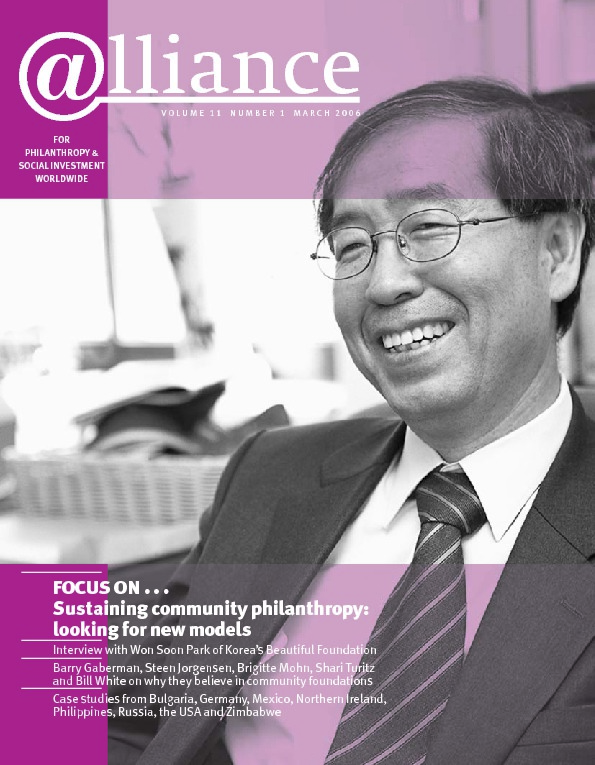Community foundations are established for the purpose of raising local funds and working with local donors; if they do this successfully, they will become sustainable. Sustainability is thus the key measure of success. To become sustainable, a community foundation should be open to all community needs, transparent in fund management, and assertive in selling its services. It should be able to present its community activities as its service package and willing to set a price for its products and services.
Before even broaching the concept of endowment, a community foundation should prove that it is reliable and trustworthy. Above all, it must be creative and entrepreneurial and ready to take advantage of the opportunities that present themselves in its particular community.
In Russia there are few tax benefits for charities and the concept of endowment is not even mentioned in the legislation. Furthermore, community foundations started in conditions of ‘gangster capitalism’ and total public distrust. But the strength of the community foundation concept is that it works on the basis of common sense and objective market law. The first Russian community foundations have proved that they can assist companies and people with money as much as the reverse.
Togliatti Community Foundation
The first Russian community foundation in the city of Togliatti started with the setting up of small donor-advised funds for companies (primarily for local banks). It soon proved itself a reliable partner and the number of donors and the amounts of their donations increased. Today, many companies trust them to manage all of their community involvement budgets.
Togliatti Community Foundation also had regional legislation on its side. This provides for the reduction of profit tax from 24 to 20 per cent if a company donates 7 per cent of its net profit. This provision was particularly attractive to medium-sized banks. By giving 7 per cent of their profit, they were able not only to reduce their profit tax but also to retain the funds at their disposal, while paying interest to the foundation.[1] This arrangement is known as a ‘long-term donation’ (in the absence of any legal concept of endowment). Aside from the funds raised for the community foundation, the arrangement is important because it shows how the professional team managed to identify and use available opportunities.
Now the community foundation covers up to 30 per cent of its grant budget from the deposit. In addition, it has so far managed to prove its worth to the city that the city authorities have provided it with increased operational support. It is also actively involved in the development of the field nationally and gets funding from international grants.
A diverse funding base
The key to sustainability is to attract as many donors as possible in order to create a diverse and strong funding base, and the earlier this happens the better. The community foundation in Pervouralsk (an industrial city in Urals), for example, was established on the basis of an existing ‘council of directors’ – an informal group of senior managers of the city’s largest enterprises. The ‘directors’ formed the board and ensured strong financial support to the community foundation, which they agreed to set at 200 roubles ($7) per worker from each enterprise. Having such a funding base plus key community leaders on its side, the community foundation was able to involve other donors from medium and small businesses and individuals.
Another and different example of success is the community foundation in Rubtsovsk, a small city in Siberia, whose funding could come only from small local businesses. The foundation involved donors by making philanthropy fun, for example by organizing community events – charitable balls, performances and sport competitions. The foundation became such an integral part of the community that the local authorities now find it natural to use it for hosting official city celebrations.
There are almost as many different models as there are community foundations in Russia. This is because a community foundation will succeed only if it develops out of the particular circumstances of a community. What they have in common is a recognition of the need for community foundations to be creative, professional and entrepreneurial and to seek out opportunities in their community. When it becomes an integral and natural part of that community, meeting donor and community interests, it will become sustainable.
1 Under this provision, after making a donation in the amount of 7 per cent of its annual net profit, the bank signs a contract with the community foundation to the effect that the latter places this money on 25-year deposit with the bank. The arrangement is mutually beneficial: the community foundation gets a guaranteed 10 per cent annual interest, while the bank retains the principal and pays less profit tax.
Vadim Samorodov is Programme Director at Charities Aid Foundation (CAF) Russia. He can be contacted at VSamorodov@cafrussia.ru





Comments (0)